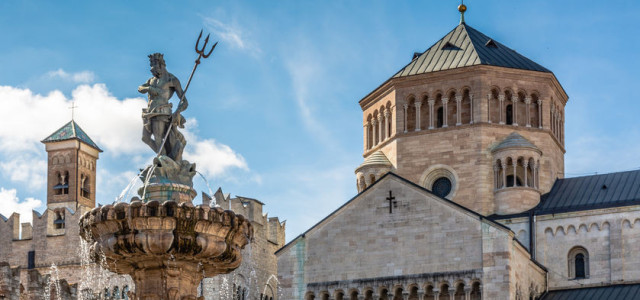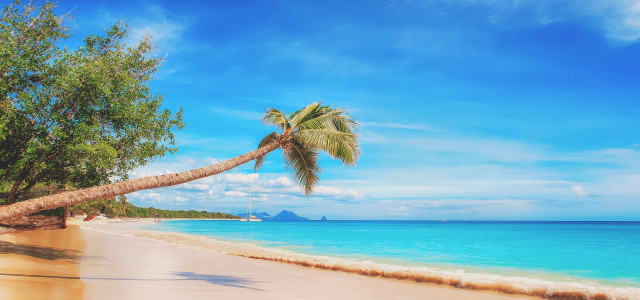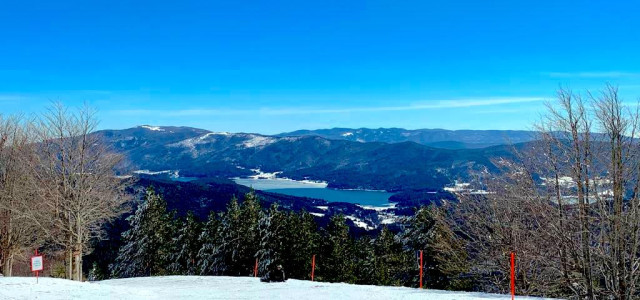Barcelona: 5 good reasons to love it there
It is one of the most beautiful cities in the world and overlooks the Mediterranean Sea. Poetry for the eyes. A whirlwind of history and culture. A magical to explore throughout the year. Even in winter and autumn seasons when the rain and the colors are among the protagonists…
Summary
There is no best time of the year to visit Barcelona: the Catalan capital is a crossroads of wonders that you can admire all year round.
From January to December, this city transforms itself into a different painting month after month; it is truly a canvas made up of unique colors and sounds. Barcelona is a dynamic work of art that becomes fixed into the soul of tourists who visit, and rarely will it abandon its place in your heart.
If you really must choose, however, spring is perhaps the most suitable season to let yourself be carried away by this city. From mid-April to mid-June, you have a good chance of enjoying good sun and a pleasant temperature. We can say the same for the month of September, although the climate is a little more rainy. In the summer months, on the other hand, Barcelona becomes crowded with tourists. During this season the traffic becomes almost oppressive and the prices - as you can imagine - increase. In the winter months, the cold and bad weather can play a role in your stay.
This can also be the case in autumn. But these last two seasons can also reserve pleasant surprises. You can experience unexpected emotions, and particular images that will transform into indelible memories that will become impressed into the memory. Just like the immortal show that is modeled in oder to admire Barcelona under the rain: a wonderful painting that seems to come directly out of a novel by Carlos Ruiz Zafon.
Snapshots of a magical city that also offers magnificent colors in the autumn. They seem like brush strokes laden with different shades which shape marvelous scenarios.
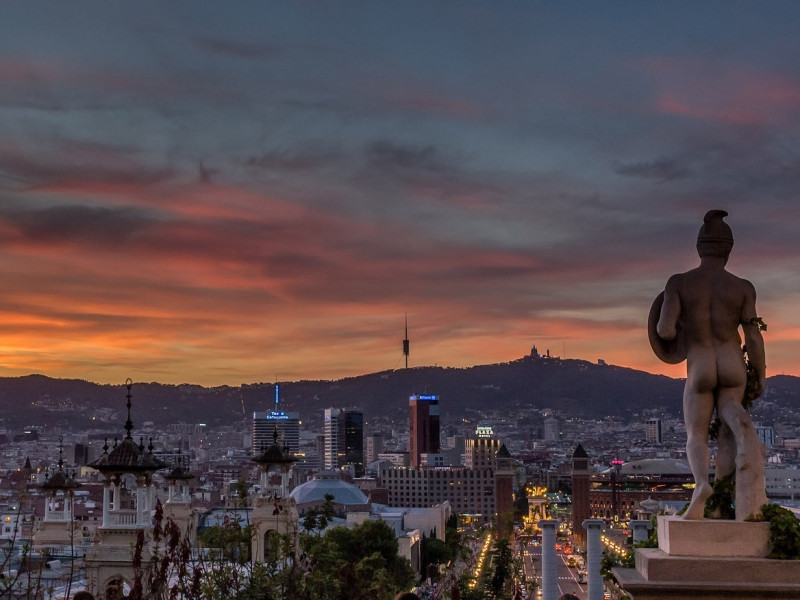
Painting Barcelona
We are not able to talk about a city like Barcelona in a just few lines. It is not easy. It’s like climbing a mountain made up of works of art, museums, streets and monuments, as well as fascinating and mysterious places that should be explored one after the other.
That’s why we decided to go deeper and focus on 5 of the typical treasures of this city. 5 Catalan symbols which, perhaps, represent the city of Antoni Gaudí to a greater extent. 5 emblems that make up the wall of wonders that the Spanish city offers; a wall where every brick is located in a corner full of wonder. 5 good reasons to love this place.
Taking a walk on Le Ramblas
This Catalan wonder is a long avenue that starts from Plaza de Catalunya and leads to the foot of the statue of Columbus which is just north of the ancient port. It’s a combination of hotspots, monuments, tourists, museums and street artists. In addition you will find numerous restaurants, bars and ancient buildings. There are sounds and colors that alternate with the rhythm of music that will accompany you on your a long walk.

Le Ramblas is one of the most famous streets in the world: the "center" of Barcelona - a lively environment always full of people. There is a striking contrast between the desire to have fun, the culture that seeps from angle, and the desire (perhaps not very well satisfied today) to really experience Spain. It is a very touristic area, in fact, Le Ramblas is assaulted daily by the various visitors of the Iberian peninsula, so much so that it is often difficult to meet a Spaniard.
Nevertheless, Le Ramblas' sidewalks are worth more than just one walk, if only for the large number of attractions to see and the close proximity to other interesting areas of Barcelona such as: the Gothic Quarter; the Boqueria Market; and the port.
In the vicinity of La Sagrada Família
The Temple Expiatori de la Sagrada Família, or "The Expiatory Temple of the Holy Family" is a lighthouse lit upon the rooftops of Barcelona: it is a large Catholic basilica designed by the architect Antoni Gaudí who was the greatest exponent of Catalan modernism. It is considered to be a masterpiece (perhaps the most visited in the city) which fast became the symbol of the capital.
It was funded in part by the faithful congregation, but The Sagrada Família is still under construction because of the high costs and the difficulties of the project. It is estimated that the works will be completed by 2026. In the meantime, the building itself has become a real tourist attraction thanks to the tall towers and to the museum that describes the various stages of the construction phases to its visitors. You will find the sculptors clinging to the spiers, laborers who are cutting large blocks of stone, and scaffolding scattered about.
Among the different colors of Barcelona
Barcelona is not just a collection of works of art. It is also a precious mix of colors that can be admired especially between October and November. This is when the autumn season creates unique fantasies at Ciutadella Park; at Horta Labyrinth Park, at Parc Guell, at Montjuic Park, as well as in all of the others.
The first, in particular, is synonymous with leisure and relaxation. But its gardens also hide a rich historical and cultural heritage. This park is considered to be the largest social gathering center in the city where street artists, musicians and families gather every day. It is also possible to admire the Monumental Waterfall there that was built and designed by Josep Fontseré and his young assistant Antoni Gaudì.
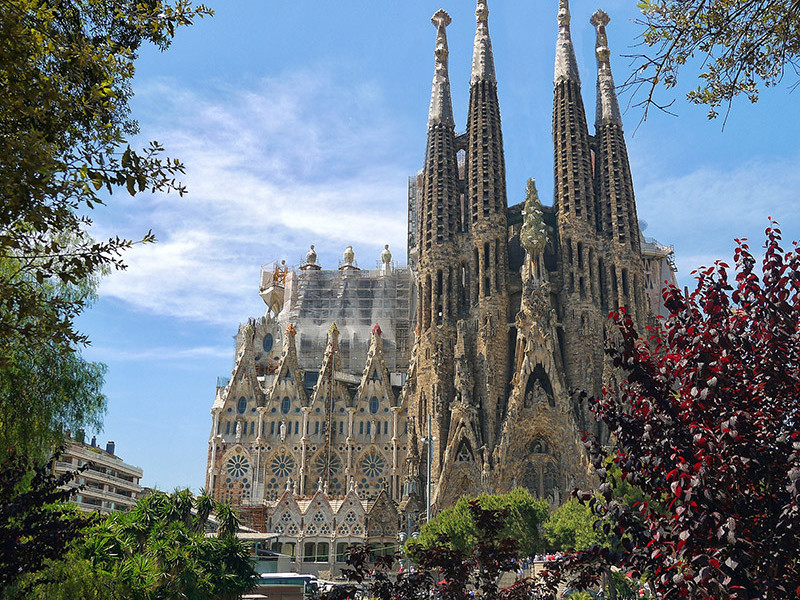
The Cuisine in Barcelona
Another typical symbol of Barcelona is its cuisine. It is definitely aworld full of tasty dishes, including first courses and phenomenal desserts. Specifically, the Catalan cuisine is made up of fresh ingredients from the Mediterranean coast including: vegetables (tomatoes, aubergines, artichokes mushrooms and garlic); wheat products (bread and pasta); olive oil; wines; legumes (beans and chickpeas); pork; chicken; lamb; cheese; and last but not least, many different types of fish (sardines, anchovies, tuna and cod).
However, the prince of all these ingredients is perhaps the pepper which is used in many meat and fish dishes.
If we wish to mention some delicacies from the area we must not forget: l'esqueixada de bacalà (a cod salad cut into strips and garnished with hot pepper, tomato, onions, olives, oil and vinegar); Catalan cream ( a well-known dessert prepared with a superficial layer of caramelized sugar which is made by resting a red-hot cast iron plate on it for a few moments); paella (not native to the area, but much appreciated especially by tourists who love to eat it accompanied by sangria).
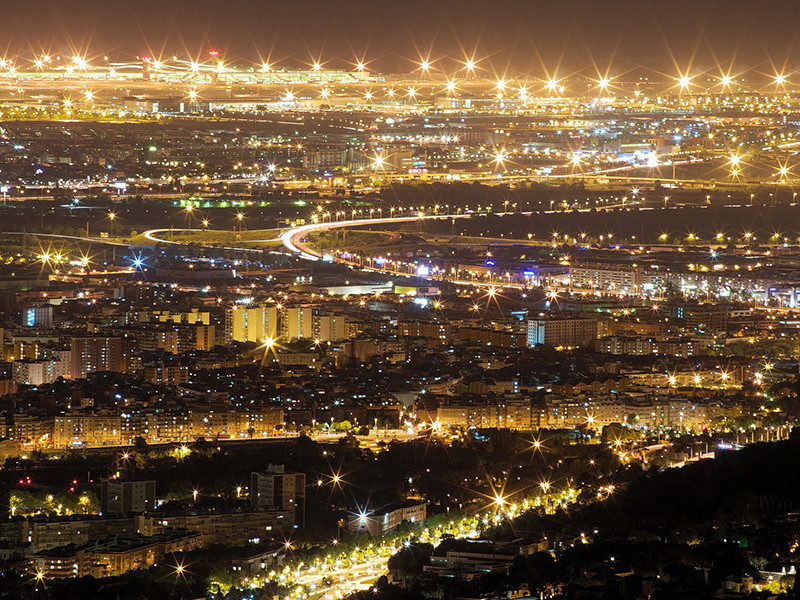
In the Gothic Quarter
At the end of this short trip to Barcelona you can immerse yourself in the narrow alleyways and the half-hidden lanes of the Barrio Gotico which is one of the streets that encloses the history of the Catalan city. It is a neighborhood that can be reached by abandoning the hustle and bustle of the tree-lined Le Ramblas and entering evocative alleys and rarefied atmospheres. This is true especially at night when the shadows of darkness are broken by the yellow lights of the houses and streets. And the hotspots there turn into cozy alcoves where you can enjoy a drink or a hot soup (depending on your taste and the season you decide to visit).
It is a labyrinth of narrow streets in which you will come across traces of the ancient Roman city surrounded by magnificent Gothic monuments and medieval buildings that preserve the imprint of a glorious past. It is without a doubt a silent witness of importance that shall never be lost.
See you soon!
Barcelona is a kingdom that should be explored slowly. It is a place to visit without haste. It demands more than a week’s time to be undressed of its every secret and there are more than 5 good reasons to love it there.
It is a city that deserves to be studied: we will publish these articles soon…
Reproduction reserved © Copyright Altrama Italia
![Immagine descrittiva - BY [Walkerssk/Pixabay] Immagine descrittiva - BY [Walkerssk/Pixabay]](https://api.viaggiart.com/resources/images/xl/list/image/172431-58a1f2987ff6475dc469f5be6c7a6e87-1570102095.jpg)




